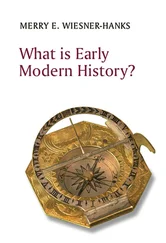R. Nisbet Bain - The Cambridge Modern History
Здесь есть возможность читать онлайн «R. Nisbet Bain - The Cambridge Modern History» — ознакомительный отрывок электронной книги совершенно бесплатно, а после прочтения отрывка купить полную версию. В некоторых случаях можно слушать аудио, скачать через торрент в формате fb2 и присутствует краткое содержание. Жанр: unrecognised, на английском языке. Описание произведения, (предисловие) а так же отзывы посетителей доступны на портале библиотеки ЛибКат.
- Название:The Cambridge Modern History
- Автор:
- Жанр:
- Год:неизвестен
- ISBN:нет данных
- Рейтинг книги:4 / 5. Голосов: 1
-
Избранное:Добавить в избранное
- Отзывы:
-
Ваша оценка:
- 80
- 1
- 2
- 3
- 4
- 5
The Cambridge Modern History: краткое содержание, описание и аннотация
Предлагаем к чтению аннотацию, описание, краткое содержание или предисловие (зависит от того, что написал сам автор книги «The Cambridge Modern History»). Если вы не нашли необходимую информацию о книге — напишите в комментариях, мы постараемся отыскать её.
The first series was planned by Lord Acton and edited by him with Stanley Leathes, Adolphus Ward and George Prothero.
The Cambridge Modern History Collection features all five original volumes:
Volume I: The Renaissance
Volume II: The Reformation, the End of the Middle Ages
Volume III The Wars of Religion
Volume IV: The 30 Years' War
Volume V: The Age of Louis XIV
The Cambridge Modern History — читать онлайн ознакомительный отрывок
Ниже представлен текст книги, разбитый по страницам. Система сохранения места последней прочитанной страницы, позволяет с удобством читать онлайн бесплатно книгу «The Cambridge Modern History», без необходимости каждый раз заново искать на чём Вы остановились. Поставьте закладку, и сможете в любой момент перейти на страницу, на которой закончили чтение.
Интервал:
Закладка:
In the following year (1455) Mohammad—who claimed Servia through his step-mother, a Servian Princess—won a foothold in the south of the country by the capture of Novoberdo, with its important gold and silver mines; and he spent the next winter in making large and elaborate preparations for besieging Belgrade by land and water. The siege lasted three weeks in July, 1456, and hardly has a more brilliant feat been achieved in the course of the struggles between Europe and the Ottoman Turks than the relief of Belgrade by John Hunyady and his Magyar army. It was the second time that he saved this bulwark at the gates of Hungary. Pope Calixtus III had sent an able legate, Juan de Carvajal, to rally the people round the general in the holy cause; but it is a Minorite brother, John of Capistrano, who shares with Hunyady the glory of the triumph. The eloquence of this preacher, inspired with zeal against the misbeliever, could still move men’s hearts to some faint semblance of that crusading fervour which had once strung Europe to madness. The greater part of the host which was collected was a tattered undisciplined rabble; but infinite patience and energy overcame all difficulties. With a few vessels Hunyady broke through the chain of barques by which Mohammad had barred the Save, and entered the besieged city. Though the defenders were far inferior in number and equipment, yet by valour and cunning they defeated all the efforts of the enemy and at last forced the whole army to retreat in confusion, and with tremendous losses, amounting to more than 50,000 killed and wounded, 300 guns, and 27 war-boats. In the first hour of delight the victors overrated the importance of their achievement; they fancied that the Turk was almost crushed and that but little was wanting to drive him from Europe. It could be done, wrote Hunyady in a letter to the Pope, “if Christendom were to rise up against him.” But there was no chance of such a rising, and in a few days Christendom lost her ablest champion, Hunyady himself (August, 1456). Hungary, crippled by domestic feuds, without a leader in whom men trusted, receiving no support from Germany in consequence of the hatred between King Wladislav and the Emperor, could not follow up her victory. Presently Wladislav died and Hunyady’s son, Matthias Corvinus, a lad of sixteen years, came to the throne (January, 1458).
Meanwhile Mohammad was taking measures for the subjection of Servia. He was helped by its domestic circumstances. After a struggle for the succession to the crown, the government devolved upon a woman, Helena, the widow of the despot George’s youngest son; and she took the strange impolitic step of placing the country under the protection and overlordship of Pope Calixtus, who had vowed his energies to the abolition of the Turk. But this act alienated the boyars, who liked the interference of the Catholic no better, or even less, than the rule of the infidel. In 1457 Mahmud Pasha (Beglerbeg, or Governor, of Rumelia) had overcome all Servia; in 1458 Mohammad came himself, captured Semendra by treachery, and received the voluntary submission of many of the boyars. It is said that 200,000 inhabitants were carried from the land, whether to be trained for military service, or to be settled in other parts of the empire.
On the death of Hunyady only a single great warrior was left to fight for the cause of Christendom—”standing almost alone, like a strong wall,” said Pope Calixtus;—but it was as much as his strength could compass to defend his own land. This was George Castriotes, the Albanian, whom we are accustomed to designate as Scanderbeg,—a name which always reminds us that he had been brought up in the faith of Islam and held high office under Murad II, before he returned to his own religion and his own people. Beneath the supremacy of his masterful and daring spirit, the Albanian folk, which in the regions of northern Epirus preserved the old Illyrian language, was raised into transient greatness. For a brief space, an united Albanian nation lifted up its voice amid the roar of the world’s tide, and admiring Europe applauded. In the warfare on the Illyrian hillsides, Scanderbeg was almost invariably successful; and a defeat which he suffered at the Albanese fortress of Belgrade, through an indiscreet concession (1456), was avenged in the following year by a great victory over Mohammad’s able general Hamsa, who was himself taken prisoner. Mohammad was glad to make a truce for a year, and Scanderbeg was persuaded to cross over, a second “Alexander” of Epirus, to Apulia, to help the Spaniard Ferdinand of Naples to drive out the French (1461). On the Albanian chief’s return, new discomfitures forced Mohammad, intent on more pressing enterprises, to seek a permanent peace; and the Sultan acknowledged Scanderbeg as the absolute sovereign of Albania (April, 1463).
But the peace was broken before the year was out. It was the Albanian who violated the contract, under the importunate pressure of the Pope and the Venetian Republic. He reopened hostilities by a raid into Macedonia; and in 1464 he won a crushing victory over a Turkish army under Balaban (an Albanian renegade). His successes decided Mohammad to take the field himself at the head of a mighty host and lay siege to Kroja, the Albanian capital (1465). The last exploit of the hero was to render this expedition fruitless. Failing to storm the place, Mohammad retreated, leaving Balaban to starve it out; but before he left the country he massacred some thousands of Albanian families, whom he discovered in their refuge in the valley of Chidna. Having no forces sufficient to relieve Kroja, Scanderbeg visited Rome, hoping to obtain effectual help from Pope Paul II. He obtained a little money and much good will. On his return to Albania he found that some Venetian troops had come to his aid, and he was now able to act. But fortune relieved Kroja. A chance blow wounded Balaban mortally, and the blockading army immediately retreated, leaving Albania in a state of terrible devastation. The “athlete of Christendom,” as Scanderbeg was called, died a year later at Alessio, recommending his son and his country to the protection of Venice (January, 1467). For Venice his death was a serious event, as he was the “buffer” between the Ottoman power and her possessions on the lower Adriatic, such as Scodra and Durazzo. Henceforward she would have to do her own work here.
Bosnia, which had borne its part in the fatal battle of Kosovo field (1389), was inevitably drawn into the vortex. The catastrophe of this land received a peculiar character from its religious condition. The mass of the people, high and low, was firmly devoted to the Patarine or Bogomilian tenets, which Catholics and Greeks branded as Manichaeanism. It is one of that series of religions which range from Armenia to Aquitaine, including Albigensians at one extremity and Paulicians at the other, all apparently descended from the ancient “heresies” of Adoptianism. But the Catholics were eager to crush the heresy; Franciscan missionaries worked with all their might in the land; and some of the kings embraced Catholicism. In 1412 the Bogomils threatened to Turcise, and in 1415 they executed the threat, fighting at Usora against Hungary. When King Stephen Thomas embraced Catholicism (1446), the Pope and the King of Hungary hoped that the false doctrines would be extirpated. In the south of the Bosnian kingdom was the large vassal state, practically independent, which had grown up out of the lordship of Chlum. The voivod of this country was Stephen Vukcic, and in 1448 he received from the Emperor the title of “Duke (Herzog) of St Sabas”; whence the complex of his lands derived the name of Herzegovina, the Duchy. His daughter married Stephen the King; but Stephen the Duke remained true to the national faith. He seems to have entered into a sort of vassal relation to Mohammad; for, when he makes peace with his neighbour Ragusa in 1454, we find him undertaking not to attack it, save at the command of the “Great ruler the Sultan of Turkey.” On the fall of Constantinople the Bosnian King offered tribute; but Hunyady’s feat at Belgrade, and the success of Scanderbeg in the south, raised up King Stephen’s drooping hopes and heartened him to refuse the payment (1456). Before, however, any results ensued from his change of attitude, he made peace again (1458); his object was to have his hands free for laying hold of Servia. In the diet of Szegedin the Hungarian King agreed that the despot’s son, Stephen Tomasevic, should become despot of Servia and actual ruler of the little northern strip of Servia that was not in Turkish power. The position here depended entirely on holding the key-fortress of Semendra. But the inhabitants of this place were reluctant to submit to the Bosnian prince imposed upon them; and when in the next year Mohammad appeared with an army, they opened their gates to him. A cry of mortification at the fall of this bulwark arose in Hungary and Italy, and the disaster was attributed to the corruption and cowardice of Stephen Tomasevic. The Hungarian king Matthias Corvinus never forgave him; but the evidence seems to show that the surrender was the act of the inhabitants of the town, done in his despite.
Читать дальшеИнтервал:
Закладка:
Похожие книги на «The Cambridge Modern History»
Представляем Вашему вниманию похожие книги на «The Cambridge Modern History» списком для выбора. Мы отобрали схожую по названию и смыслу литературу в надежде предоставить читателям больше вариантов отыскать новые, интересные, ещё непрочитанные произведения.
Обсуждение, отзывы о книге «The Cambridge Modern History» и просто собственные мнения читателей. Оставьте ваши комментарии, напишите, что Вы думаете о произведении, его смысле или главных героях. Укажите что конкретно понравилось, а что нет, и почему Вы так считаете.












